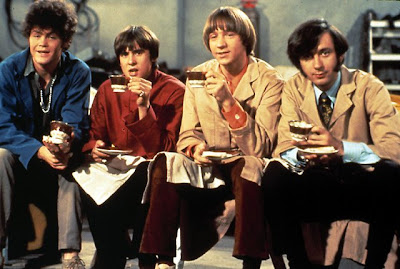“I learned electronics in the navy, on North Island, San Diego, my home base. I also went through bootcamp there. As an aircraft electronics engineer, I served for four years on aircraft carriers: two years on the Oriskany, and two years on the Yorktown.
“With my Merchant Marines/Navy I.D., they told me all the freighters leaving from California went to the far East, and that the closest port with passage to Europe was in New Orleans. So I left Newport Beach, California, and hitchhiked, bound for the port at New Orleans with 50 bucks in my pocket. While still in California I was picked up by an Australian, a plumber. Having lived and gone to school in Australia before, he and I hit it off well and became fast friends.
“We both headed straight to New Orleans and got an apartment together in the French Quarter off Bourbon Street, during Mardi Gras. While staying there, there was a break in to our apartment. But it was the police who broke in –breaking down the front door without a warrant, guns drawn. It scared the hell out of us. After scaring us half to death they realized they were looking for someone else.
“After the time in the French Quarter, I found a freighter shipping out of the Port of New Orleans, the SS Nardo, a Norwegian grain freighter. As a mess hall boy, I landed in Stavanger, Norway. And I was sick for the entire 35 days onboard, which was strange. Of the four years I was in the navy I never got seasick. So in order to function I had to make myself throw up before serving food. After a while, of throwing up so often, there was only green bile coming up. Their remedy was a suppository up your butt. But I didn’t do it. It was unappealing to me. But I did feel better in a prone position.
“With the dry heaves, in order to have something to throw up, I had to eat crackers. That was the only way to cope, as the Norwegians do not consider seasickness as an excuse to not perform duties. The way the freighter tossed and rolled, I didn’t know my name anymore. The Norwegians also loved blood pudding, a jello-like serving of fish blood. It stunk and was nauseating. It only helped me to throw up.
“The Norwegians onboard would also be constantly painting the ship with this anti-corrosion silver paint. And it would get everywhere, including the smell. They would go directly from painting to eating. They had paint all over their hands and it wound up on the dishes and silverware. So they would end up eating paint, literally. Already nauseated, I avoided the contaminated dishware as much as possible.
“So immediately upon leaving the shores of America, and with the immediate onset of nausea at sea, I had to adapt to unfamiliar conditions, which is something I have had to do ever since. But the overseas passage seemed endless. As they paid me a seaman’s salary, I earned only very little money at sea. When the Nardo finally arrived at port it was in the dead of winter.
“From Stavanger, I resumed my hitchhiking towards Oslo. All was quiet. I stayed on the highway for hours, and it was completely desolate. A car passed once every four or five hours. The ice must have been at least two feet deep. Eventually, I was picked up by a farmer driving an old rickety pickup truck. Speaking no English, he kindly shared his cheese with me. It was clear later that the people in this region had never seen a foreigner before, as if I was from outer space. As he dropped me off in the middle of nowhere, north of Stavanger, south of Oslo, I was wearing a flimsy California cotton jacket, with a short-sleeved shirt underneath. But I never felt cold. I was so excited to be in Europe.
“I recall the beauty of the fjords among a freezing placid lake. It was like being dropped right in the middle of Lord of the Rings. Completely alone, I could hear goat’s bells and heard hawks screaming as they floated through the air down the fjord, flying over the water. This was all before I did or knew anything to do with Modena. I had no money, no knowledge of mechanics or cars, no family, no backup, nobody to help me. And I knew no one. Italy was a foreign place and I had never been there or even to Europe. I could not speak Italian but was leaving for Italy. It was my ‘mission impossible,’ with the future ahead of me. And still it was very exciting in the midst of it all.
“But I knew one thing: I had to own a Ferrari or Maserati, with everyone saying ‘you’re a crazy man, you don’t have any money, that’s impossible’ –naysayers. If they can’t do it then they don’t want you do it.
“I ended up as an actor in Rome for Dino De Laurentiis with David Niven (a famous English actor), and Alberto Sordi. I slept under woodpiles in my sleeping bag when I arrived in Modena. I had no money for a hotel or pensione. People said ‘you’ll never be able to do it.’ That only made me more determined to succeed."


















